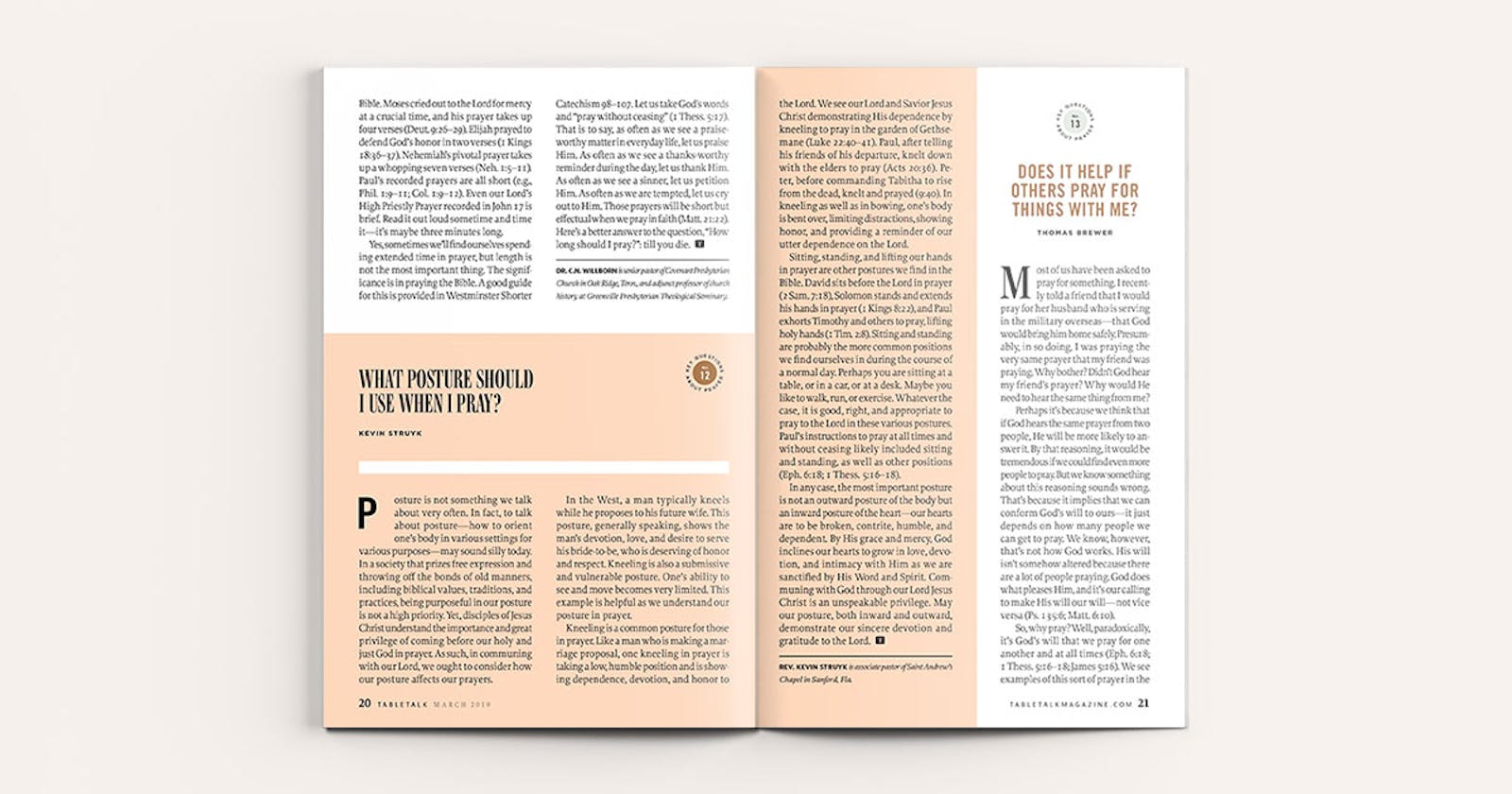
Request your free, three-month trial to Tabletalk magazine. You’ll receive the print issue monthly and gain immediate digital access to decades of archives. This trial is risk-free. No credit card required.
Try Tabletalk NowAlready receive Tabletalk magazine every month?
Verify your email address to gain unlimited access.
Posture is not something we talk about very often. In fact, to talk about posture—how to orient one’s body in various settings for various purposes—may sound silly today. In a society that prizes free expression and throwing off the bonds of old manners, including biblical values, traditions, and practices, being purposeful in our posture is not a high priority. Yet, disciples of Jesus Christ understand the importance and great privilege of coming before our holy and just God in prayer. As such, in communing with our Lord, we ought to consider how our posture affects our prayers.
In the West, a man typically kneels while he proposes to his future wife. This posture, generally speaking, shows the man’s devotion, love, and desire to serve his bride-to-be, who is deserving of honor and respect. Kneeling is also a submissive and vulnerable posture. One’s ability to see and move becomes very limited. This example is helpful as we understand our posture in prayer.

Kneeling is a common posture for those in prayer. Like a man who is making a marriage proposal, one kneeling in prayer is taking a low, humble position and is showing dependence, devotion, and honor to the Lord. We see our Lord and Savior Jesus Christ demonstrating His dependence by kneeling to pray in the garden of Gethsemane (Luke 22:40–41). Paul, after telling his friends of his departure, knelt down with the elders to pray (Acts 20:36). Peter, before commanding Tabitha to rise from the dead, knelt and prayed (9:40). In kneeling as well as in bowing, one’s body is bent over, limiting distractions, showing honor, and providing a reminder of our utter dependence on the Lord.
Sitting, standing, and lifting our hands in prayer are other postures we find in the Bible. David sits before the Lord in prayer (2 Sam. 7:18), Solomon stands and extends his hands in prayer (1 Kings 8:22), and Paul exhorts Timothy and others to pray, lifting holy hands (1 Tim. 2:8). Sitting and standing are probably the more common positions we find ourselves in during the course of a normal day. Perhaps you are sitting at a table, or in a car, or at a desk. Maybe you like to walk, run, or exercise. Whatever the case, it is good, right, and appropriate to pray to the Lord in these various postures. Paul’s instructions to pray at all times and without ceasing likely included sitting and standing, as well as other positions (Eph. 6:18; 1 Thess. 5:16–18).
In any case, the most important posture is not an outward posture of the body but an inward posture of the heart––our hearts are to be broken, contrite, humble, and dependent. By His grace and mercy, God inclines our hearts to grow in love, devotion, and intimacy with Him as we are sanctified by His Word and Spirit. Communing with God through our Lord Jesus Christ is an unspeakable privilege. May our posture, both inward and outward, demonstrate our sincere devotion and gratitude to the Lord.
